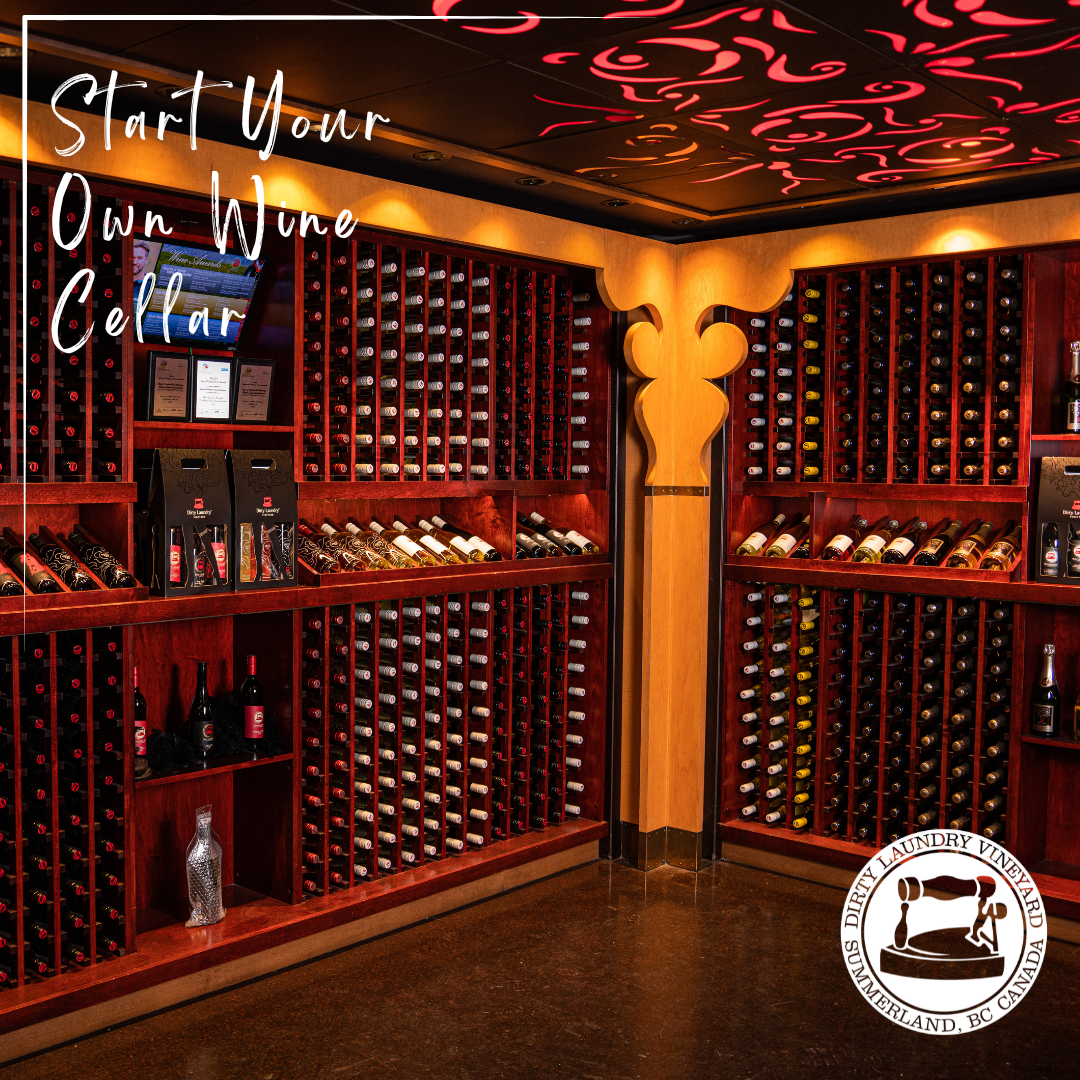How to Start Your Own Wine Cellar: A Beginner’s Guide

Building your own wine cellar is more than just a project—it’s a personal journey into the world of wine appreciation. The term “wine cellar” can conjure up images of a physical cellar in the basement of the house, however, when referring to a wine cellar, it can simply mean a wine collection. The actual storage of the bottles does not have to be in a physical cellar, but we discuss that in more detail later on.
Starting a wine cellar can feel overwhelming, especially with the sheer variety of wines available. But building your first collection is an exciting opportunity to explore new flavours, learn about different styles, and discover your preferences. Whether you’re a casual enthusiast or planning to grow your cellar over time, this guide will help you stock it with versatile, beginner-friendly options that balance quality and value.
Here’s how to get started on you first wine cellar or collection:
1. Define Your Purpose
Before beginning construction or renovations on your space, or diving into shopping for bottles, think about what you want your wine cellar to accomplish.
- For Personal Enjoyment: If you love wine and want a curated collection to suit your taste, focus on your favourite regions and styles.
- For Investment: If you’re planning to collect high-value bottles, research wines that appreciate over time.
- For Entertaining: If your cellar will be a centerpiece for hosting, design it with aesthetics and accessibility in mind. Buy a variety of bottles that are versatile, able to pair with a wide range of food styles.
2. Choose the Right Location
Wine thrives in the right environment. The location of your cellar is key to maintaining the quality of your bottles. If you don’t have a basement or suitable area, consider investing in a wine fridge or a small modular wine room.
These are the key elements to consider, wherever the location of your cellar:
- Temperature: Keep your wines at a stable temperature, ideally between 10–15°C. If you’re serious about aging wine, consider installing a cooling unit designed for wine cellars.
- Humidity: Aim for 60–70% humidity to prevent corks from drying out. Invest in tools to monitor and maintain your cellar’s conditions. A thermometer and hygrometer will help you keep track of temperature and humidity levels.
- Light: Keep the space dark to protect wine from UV damage. Use dim, LED lighting that won’t damage your wines.
- Vibration-Free: Avoid placing your cellar near appliances or heavy foot traffic, as vibrations can disturb wine’s aging process.
3. Plan Your Storage System
Wine storage is about more than just stacking bottles. A good system keeps your collection organized and accessible.
- Racks: Use wine racks made of wood or metal that store bottles horizontally to keep corks moist.
- Capacity: Start with more space than you think you’ll need. Collections grow quickly!
- Tracking: Tracking your collection ensures you drink your wines at their peak. Use a wine journal, spreadsheet, or app to record vintage, region and producer, price, and ideal drinking window.
4. Start Your Collection
This is where the fun starts! Once your storage space is ready, it’s time to stock your cellar. Starting a wine cellar doesn’t mean you need to break the bank. Allocate your budget thoughtfully:
- Everyday Wines: $10–$30 per bottle.
- Mid-Range Collectibles: $30–$100 per bottle.
- Aging Wines and Splurges: $100+ per bottle.
As your knowledge and budget grow, you can gradually add higher-end wines to your collection.
Everyday Wines:
Every wine cellar should include a selection of red, white and rosé wines that you can enjoy on any occasion. These should be approachable, versatile, and affordable options that pair well with a variety of meals. Or, simply choose everyday wines that you love.
- Red wines: A medium-bodied red like a Merlot or a Grenache offers soft tannins and fruit-forward flavours. Our aptly named “Cellar Series Merlot” or “Cellar Series Malbec” would both be perfect additions to your new wine cellar.
- White wines: Look for a crisp Sauvignon Blanc (such as our “Cellar Series Fumé Blanc” - exclusively available to club members), a light Pinot Gris for refreshing options, or a bright, full Chardonnay.
- Rosé: A light, medium-bodied Rosé is a must-have for warm weather or light fare.
Dessert and Fortified wines:
Sweet and fortified wines are essential for pairing with desserts or ending a meal on a high note.
- A Sauternes (a French sweet wine from the region of the same name in the Graves section in Bordeaux) or a Canadian Ice Wine will add rich, sweet options to your wine cellar.
- When choosing ports for your wine cellar, opt for a Ruby port for bold fruitiness, and Tawny for nuttier, aged flavours. Our non vintage ruby port-style wine was aged in French Oak for 3 years.
- You might also want to include Sherry. A dry Amontillado and a sweet Pedro Ximénez would provide a range of sweetness levels.
Bubbles:
Bubbles elevate any celebration or casual gathering. For the budget-friendly, sparkling wine, Italian prosecco or Spanish cava is ideal. Consider French Crémant or Champagne if you are wanting a higher end sparkling experience.
Wines for Aging:
One of the joys of having a wine cellar is watching your collection evolve over time. Add a few bottles with aging potential to appreciate the complexity that comes with maturity. Wines like Bordeaux, Barolo, or premium Chardonnays typically age beautifully for 5–10 years or more, developing richer and more nuanced flavours.
Wines from Different Regions:
Expand your palate and add depth to your collection by exploring wines from iconic regions such as:
- France - Bordeaux, Burgundy, Rhône, Loire Valley
- Italy - Chianti Classico, Barolo, Amarone, Soave
- Spain - Rioja, Priorat, Albariño, Sherry
- New World - Napa Valley Cabernet Sauvignon, Oregon Pinot Noir, Australian Shiraz, New Zealand Sauvignon Blanc.
Experiment with Unique Varietals:
Beginner cellars should include a few adventurous wines to encourage exploration. Look for lesser-known grape varieties or wines from emerging regions such as:
- Grüner Veltliner from Austria
- Chenin Blanc from South Africa
- Viognier from France, the USA, or Canada
- Gamay from Beaujolais, France
- Malbec from Argentina
- Tempranillo from Spain.
5. Enjoy The Journey
Building a beginner’s wine cellar is a rewarding endeavor that is about exploration and enjoyment. Don’t worry about having the “perfect” collection right away. Start with wines you’re curious about and expand as you discover new favourites.
By focusing on a mix of everyday wines, age-worthy bottles, and a touch of adventure, your beginner’s wine cellar will reflect your unique taste and personality, and be ready to provide both immediate satisfaction and long-term rewards.
Cheers to your journey!

